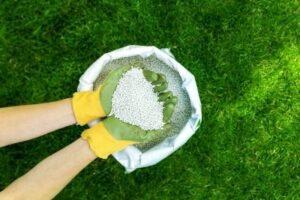The last of the cold, gray days are giving way to warm, sunny weather. People in short sleeves are emerging from their winter hibernation, eager to take tail-wagging dogs for a neighborhood walk or to go shopping for Easter outfits. Even the pesky hanger-on frosts are about to become a memory. All around the country spring is bursting into full view.
There are some specific lawn activities that deserve your attention to set up your landscape for a healthy and robust growing season.
As long as you’re sure there is no more threat of frost, you can go ahead and plant warm-season grasses. Certainly by late April, the soil will be warm enough to seed your yard. But keep in mind that warm-season grasses do best — and sod will establish roots much more quickly — if you wait until the soil temperature reaches 80-degrees. In many regions, that should be by May. 
March and April are when neighborhoods start hearing the sound of lawn mowers again. Check the recommended height for the type of grass you have in your yard and start mowing as soon as it reaches it.
You will not want to cut grass blades below recommended height because it may shock the grass just as it’s coming out of its winter dormancy. And never mind getting rid of last season’s dead top growth — with spring, it is too late to cut grass that low.
Warm-season lawns will be green by April, especially with the help of fertilizer, and you should be back into a regularly scheduled mowing routine. The smell of freshly-cut grass will remind you that the winter season truly is over.
By April, you will want to have started a fertilizer application. A warm-season lawn that is 50-percent green is a good gauge to know when to fertilize. For established evergreen lawns, early April is a good benchmark.
Your best results almost certainly will come from a complete lawn fertilizer that contains a slow-release form of nitrogen.
One easily overlooked best practice as we get well into the spring season: don’t forget to sharpen or replace your lawn mower blade, if you have not done so already. A dull blade will rip the ends of grass blades and cause the tips to turn brown.

